Rhizome: [Concept, Types and Examples]
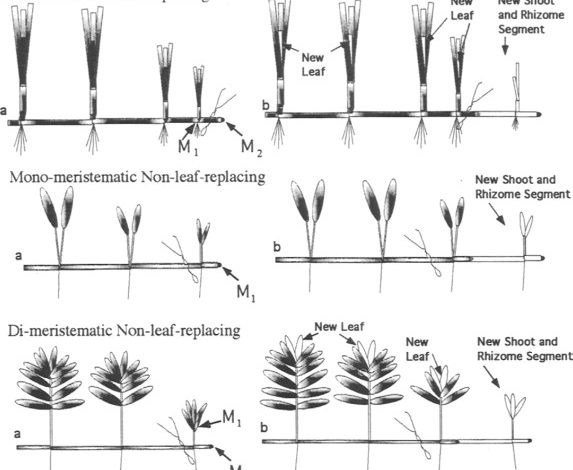
In botany and dendrology, a rhizome (/ˈraɪzoʊm/, from Ancient Greek: rhízōma «root mass», from rhizoō) is a modified subterranean plant stem that transmits roots and shoots from its nodes.
Rhizomes develop from axillary shoots and grow horizontally. The rhizome also retains the ability to allow new shoots to grow upward.[3]
A rhizome is the main stem of the plant.
A runner is similar to a rhizome, but a runner sprouts from an existing stem, has long internodes, and produces new shoots at the end, as in the strawberry plant.
In general, the rhizomes have short internodes, send out roots from the bottom of the nodes, and produce new ascending shoots from the top of the nodes.
What is a rhizome?
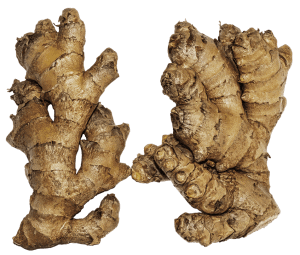 In botany, a rhizome is a horizontal stem of a plant, usually underground, from whose nodes roots and shoots usually grow.
In botany, a rhizome is a horizontal stem of a plant, usually underground, from whose nodes roots and shoots usually grow.
Some plants with underground rhizomes include ginger, hops, and turmeric, known for their medicinal properties, and the weeds Aleppo sorghum or Johnson grass, Bermuda grass, and coquito or cypero.
There are plants that have rhizomes that grow above the soil surface or that rest on it, such as some species of iris and ferns, whose expansive stems are rhizomes.
Rhizomes are also called «underground stems» or «creeping stems.» On the other hand, rhizome is also a philosophical concept developed by French philosophers Gilles Deleuze and Félix Guattari in the Capitalism and Schizophrenia Project.
There, the rhizome is a descriptive model in which the organization of the elements does not follow the lines of hierarchical subordination, that is, presenting a base or root that gives rise to multiple branches, with any of the elements involved being able to influence the other.
This last concept is inspired, of course, in the Botanical conception of it.
What functions does the rhizome have?
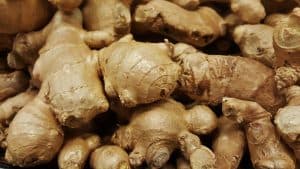 The main function of the rhizome is the storage of nutrients, including carbohydrates and proteins, until they are needed by the plant for the growth of new shoots or to survive the winter in a process called vegetative reproduction.
The main function of the rhizome is the storage of nutrients, including carbohydrates and proteins, until they are needed by the plant for the growth of new shoots or to survive the winter in a process called vegetative reproduction.
Farmers use vegetative reproduction to laterally propagate plants such as hops, ginger, and various grass species.
Some rhizomes are also eaten or used as a condiment, such as ginger and turmeric.
What type of reproduction is the rhizome?
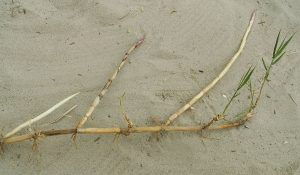 The rhizome is a vegetative reproductive system common to many plants, such as Achimenes, Canna, Zantedeschia, lily, and ginger.
The rhizome is a vegetative reproductive system common to many plants, such as Achimenes, Canna, Zantedeschia, lily, and ginger.
The rhizomes can be divided into pieces containing at least one bud each and planted separately. Depending on the type of branching they present, rhizomes can be divided into two different types:
Defined or sympodial rhizomes
Its growth is defined, which implies that the original plant can die when others appear too close to it.
The sympodial rhizomes usually have short and thick nodes, being in turn capable of storing a large amount of nutrients.
Indefinite or monopodial rhizome
Its growth is considered to be indefinite, since the original plant never dies, giving rise to a large number of new plants. It is characterized in that its nodes are longer than those of the defined rhizomes and new nodes and rhizomes are continually generated.
How is it done?
 In rhizomes, propagation is done by cutting or dividing the rhizome into sections, each of which has the capacity to produce a new shoot.
In rhizomes, propagation is done by cutting or dividing the rhizome into sections, each of which has the capacity to produce a new shoot.
As the rhizome has large amounts of nutrients stored and easily produces adventitious roots, new plants are produced with little difficulty.
Each section removed for propagation, which is usually made up of several internodes, must have a vegetative bud or meristem. Generally the rhizome section can be transplanted directly to the desired location.
When transplanting, the leaves should be reduced. The rhizomes divide at the end of the growing season or before it begins, that is, in late summer, fall, or early spring. If the division is done early in the summer, the rhizome sections form roots and establish themselves before winter.
What is the difference between rhizoid and root?
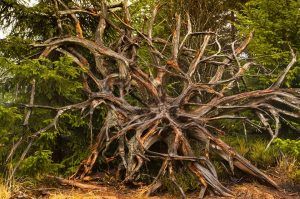 A rhizoid is a structure equivalent to the root, present at the base of the algae, which serves to fix substrate. Unlike the root, it is not used as the main organ for capturing water or nutrients.
A rhizoid is a structure equivalent to the root, present at the base of the algae, which serves to fix substrate. Unlike the root, it is not used as the main organ for capturing water or nutrients.
Importantly, the rhizoid is a threadlike cell structure present in some algae and gametophytes and sporophytes of lower vascular plants.
The root is an organ of plants, generally underground, which lacks leaves and fulfills functions of absorption, fixation and reserve; Rhizoids are root-related structures found in plants. Rhizoids are found in fungi, bryophytes, and ferns.
The vegetative body of fungi and bryophytes does not differ in root, stem and leaves. Rhizoids vary in form and function depending on the species and the type of substrate. The rhizoids of organisms that live on muddy substrates often have complex branching.
In contrast, the rhizoids of organisms that live on sandy substrates are bulb-shaped and highly flexible, like those of sea pens, allowing them to insert their entire bodies into the substrate when the rhizoid contracts.
What examples of rhizome can we find?
Plants that reproduce by rhizomes are perennial, and among them are:
Ginger
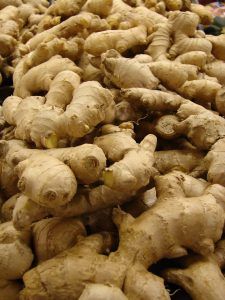 It is one of the most popular plants with rhizomes, belonging to the Zingiberaceae family, due to its multiple uses and properties.
It is one of the most popular plants with rhizomes, belonging to the Zingiberaceae family, due to its multiple uses and properties.
Grass or white grass
The grass has a thin and elongated rhizome.
Indian cane
It is a plant of tropical origin and, despite having rhizomes, which favor its development and growth, it needs a lot of attention and care for its maintenance and conservation.
Mint
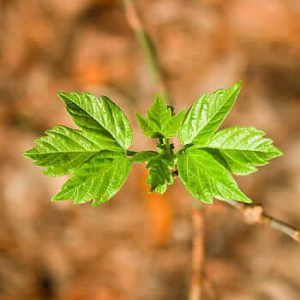 Mint is one of the most valued plants that have rhizomes, like ginger, for its properties, smell and peculiar taste.
Mint is one of the most valued plants that have rhizomes, like ginger, for its properties, smell and peculiar taste.
Lily
The lily is one of the plants with rhizomes that have thick and leafy stems, which allows them to survive extreme temperatures and harsh winters.
Solomon’s Seal
It is characterized by the presence of tubular white flowers .
For its growth and development it requires a large supply of nutrients, so the presence of rhizomes favors their absorption, storage and disposal.
Bamboo
All bamboo species reproduce by rhizomes, having a great interest especially in gardening, in order to create barriers that provide us with separation, protection or greater privacy in our homes.
other plants
Other examples of rhizomes are: Ginger Ale; Aloe; black cohosh; Hop; poison oak; some types of Ferns, Giant Horsetail; Maidenhair; Turmeric, Poplars, Lotuses; Irises and Calla.
Problems that usually appear
Although rhizomes are very beneficial for the growth and storage of a plant, their growth can sometimes be problematic for horticulturists and gardeners.
Many plants on the invasive plant list include rhizomes as part of their root system.
The uncontrolled growth of rhizomes leads to the invasive nature of a plant that harms all other plants grown in its proximity.
Furthermore, when a plant with vigorously spreading rhizomes is removed, a part of the rhizomes, if left, gives rise to the creation of an entirely new plant from it. The most aggressive plant species that thrive with the help of rhizomes are:
- Urtica (nettle).
- Equisetum hyemale (Horsetail ).
- Glechoma hederacea (Creeping Charlie).
- Polygonum cuspidatum (Japanese knotweed).
- Rhus radicans (poison ivy ).
But not all rhizomatic plants are problematic, in fact, some rhizomatic plants such as the German iris (Iris germanica) and the Tropicanna canna lily (Canna Phasion) are cultivated especially by horticulturalists due to their invasive nature so that they multiply without control, which it is beneficial for trade, since these plants are cultivated due to the commercialization of their flowers.
Also, some rhizomatic plants fill in gaps quickly and effortlessly, which is sometimes necessary in problem areas that are unfavorable for normal plants.
Bibliography and references
- Raven, Peter H.; Evert, Ray Franklin; Eichhorn, Susan E. (1992). Plant biology. Editorial Reverté. Barcelona, Spain.
- Montaldo, Alvaro. (1972). Cultivation of tropical roots and tubers. Inter-American Institute of Agricultural Sciences of the OAS. Cornell University. New York, USA.
- Ciciarelli, Maria de las Mercedes; Rolleri, Cristina Hilda. (2008). Morphology, taxonomy and characterization of seven neotropical species of the genus Canna (Cannaceae-Zingiberales). Botany Complutensis. Faculty of Natural Sciences and Museum. La Plata- Argentina. Reproduced from: http://sedici.unlp.edu.ar/bitstream/handle/10915/40658/Documento_completo__.%2032_157-184.pdf?sequence=1&isAllowed=y
- Ghersa, CM; Leon, R.J.; Satorre, E. H. (1983). Population dynamics of Aleppo sorghum rhizomes. Importance of plants under one year. Argentine Botanical Society. Buenos Aires’ University. Buenos Aires, Argentina. Reproduced from: https://botanicaargentina.org.ar/wp-content/uploads/2018/09/345-352021.pdf

![Photo of Wireworm: [Characteristics, Detection, Effects and Treatment]](https://www.complete-gardening.com/wp-content/uploads/2022/08/wireworm-characteristics-detection-effects-and-treatment-390x220.png)
![Photo of Kumquats: [Planting, Care, Irrigation, Substrate, Pests and Diseases]](https://www.complete-gardening.com/wp-content/uploads/2022/08/kumquats-planting-care-irrigation-substrate-pests-and-diseases-390x220.jpg)
![Photo of Erica Australis: [Care, Planting, Irrigation, Substrate and Pests]](https://www.complete-gardening.com/wp-content/uploads/2022/08/erica-australis-care-planting-irrigation-substrate-and-pests-390x220.png)
![Photo of Cold Weather: [Characteristics, Flora, Fauna and Adaptability]](https://www.complete-gardening.com/wp-content/uploads/2022/08/cold-weather-characteristics-flora-fauna-and-adaptability-390x220.png)